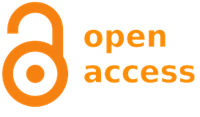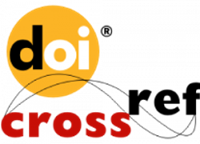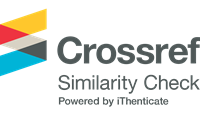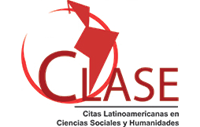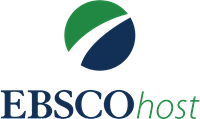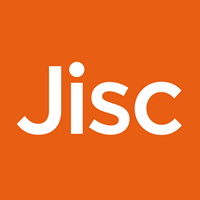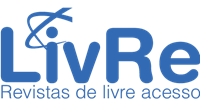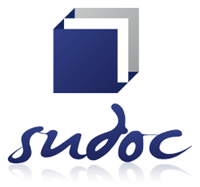Conhecimentos e atividades para potencializar o cálculo mental
Resumo
O cálculo mental é essencial no desenvolvimento de estratégias para a solução das quatro operações, fundamentais para a Matemática. Diversos autores destacam-se por apresentar estratégias de cálculo mental, como Backheuser (1933), Albuquerque (1951), Beishuizen (1993), Parra (1996), Thompson (1999a), Threlfall (2002), Boaler (2020). Por meio de uma pesquisa bibliográfica, analisamos as estratégias sugeridas por estes autores e notamos que alguns as denominam, enquanto outros detém-se a exemplos, ambos com intenção de levar o leitor a compreendê-las. Porém, apresentar uma estratégia e nominá-la não é suficiente para que o indivíduo possa compreendê-la e utilizá-la para, posteriormente, poder ensinar. É imprescindível reconhecer quais os conhecimentos necessários para acionar uma estratégia. Nesse artigo nos propomos a analisar as estratégias de cálculo mental descritas por estes autores e elencar os conhecimentos necessários a cada uma delas, de modo a compreender o que é preciso saber para formular uma estratégia. A partir da análise, elencamos quatro grupos de conhecimentos essenciais para o desenvolvimento do cálculo mental: Fatos básicos, Decomposição, Dobros e Rede de relações numéricas do 10. Para além disso, apresentamos sugestões de atividades que podem ser ampliadas e aplicadas em sala de aula, a fim de auxiliar professores a construírem com seus alunos conhecimentos e estratégias, possibilitando o desenvolvimento do cálculo mental. Nossa pesquisa indica que, antes de apresentar uma estratégia, é necessário trabalhar os conhecimentos que embasam a mesma, caso contrário, torna-se difícil realizar cálculos mentais.
Downloads
Referências
Abrantes, P., Serrazina, L., & Oliveira, I. (1999). A matemática na educação básica. Lisboa, PT: Ministério da Educação, Departamento de Educação Básica.
Albuquerque, I. (1951). Metodologia da matemática. Rio de Janeiro, RJ: Conquista.
Backheuser, E. (1933). A aritmética na escola nova. Rio de Janeiro, RJ: Livraria Católica.
Backheuser, E. (1946). Como se ensina aritmética. Porto Alegre, RS: Edição da Livraria do Globo.
Beishuizen, M. (1993). Mental strategies and materials or models for addition and subtraction up to 100 in Dutch second grades. Journal for Research in Mathematics Education, 24(4), 294-323.
Berticelli, D. G. D., & Novaes, B. W. D. (2021). Elementos do cálculo mental presentes em trabalhos do Cihem. In: Anais do VI Congresso Ibero-Americano de História da Educação Matemática (p. 719-732). Recuperado de https://repositorio.ufsc.br/handle/123456789/230722
Berticelli, D. G. D., & Zancan, S. (2021). CalMe pro – cálculo mental para professores. Rencima,12(4), 1-21. DOI: https://doi.org/10.26843/rencima.v12n4a08
Boaler, J. (2018). Mentalidades matemáticas: estimulando o potencial dos estudantes por meio de matemática criativa, das mensagens inspiradoras e do ensino inovador. Porto Alegre, RS: Penso.
Boaler, J. (2020). Mente sem barreiras: as chaves para destravar seu potencial ilimitado de aprendizagem. Porto Alegre, RS: Penso.
Buys, K. (2008). Mental arithmetic. In M. van den Heuvel-Panhuizen (Ed.), Children learn mathematics: a learning-teaching trajectory with intermediate attainment targets for calculation with whole numbers in primary school (p. 121-146) Netherlands, NL: Sense Publishers.
Brasil. Ministério da Educação. (2018). Base nacional comum curricular. Brasília, DF: MEC.
Fontoura, A. A. (1961). A escola viva: metodologia do ensino primário (Vol. 3). Rio de Janeiro, RJ: Gráfica Editora Aurora.
Gálvez, G., Cosmelli, D., Cubillos, L., Leger, P., Mena, A., Tanter, É., ... Soto-Andrade, J. (2011). Estrategias cognitivas para el cálculo mental. Revista Latinoamericana de Investigación en Matemática Educativa, 14(1), 9-40.
Humphreys, C., & Parker, R. (2019). Conversas numéricas: estratégias de cálculo mental para uma compreensão profunda da matemática. Porto Alegre, RS: Penso.
Maclellan, E. (2001). Mental calculation: its place in the development of numeracy. Westminster Studies in Education, 24(2), 145-154. DOI: https://doi.org/10.1080/01406720120069499
Manzo, A. J. (1971). Manual para la preparación de monografias: un guía para presentear informes y tesis. Buenos Aires, AR: Humanitas.
Marconi, M. A., & Lakatos, E. M. (2020). Metodologia do trabalho científico: projeto de pesquisa/pesquisa bibliográfica/teses de doutorado/dissertações de mestrado, trabalhos de conclusão de curso. São Paulo, SP: Atlas.
Markovits, Z., & Sowder, J. (1994). Developing number sense: an intervention study in grade 7. Journal for Research in Mathematics Education, 25(1), 4-29. DOI: https://doi.org/10.2307/749290
Parra, C. (1996). Cálculo mental na escola primária. In C. Parra, & I. Saiz, Didática da matemática: reflexões psicopedagógicas (Cap. 7, p. 186-235). Porto Alegre, RS: Artes Médicas.
Reys, R. E. (1984). Mental computation and estimation: past, present, and future. The Elementary School Journal, 84(5), 547-557.
Severino, A. J. (2016). Metodologia do trabalho científico. São Paulo, SP: Cortez.
Thompson, I. (1999a). Mental calculation strategies for addition and subtraction. Mathematics in School, 28(5), 3.
Thompson, I. (1999b). Issues in teaching numeracy in primary schools. Buckingham, UK: Open University Press.
Threlfall, J. (2002). Flexible mental calculation. Educational studies in Mathematics, 50(1), 29-47.
Zancan, S., & Sauerwein, R. A. (2017). Método líquen-aritmética para os anos iniciais. Vivências, 13(24), 310-321.
This work is licensed under a Creative Commons Attribution 4.0 International License.
DECLARAÇÃO DE ORIGINALIDADE E DIREITOS AUTORAIS
Declaro que o presente artigo é original, não tendo sido submetido à publicação em qualquer outro periódico nacional ou internacional, quer seja em parte ou em sua totalidade.
Os direitos autorais pertencem exclusivamente aos autores. Os direitos de licenciamento utilizados pelo periódico é a licença Creative Commons Attribution 4.0 (CC BY 4.0): são permitidos o compartilhamento (cópia e distribuição do material em qualquer suporte ou formato) e adaptação (remix, transformação e criação de material a partir do conteúdo assim licenciado para quaisquer fins, inclusive comerciais).
Recomenda-se a leitura desse link para maiores informações sobre o tema: fornecimento de créditos e referências de forma correta, entre outros detalhes cruciais para uso adequado do material licenciado.









